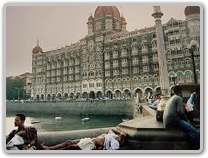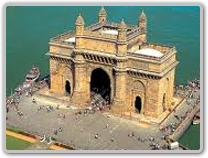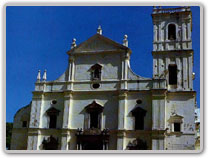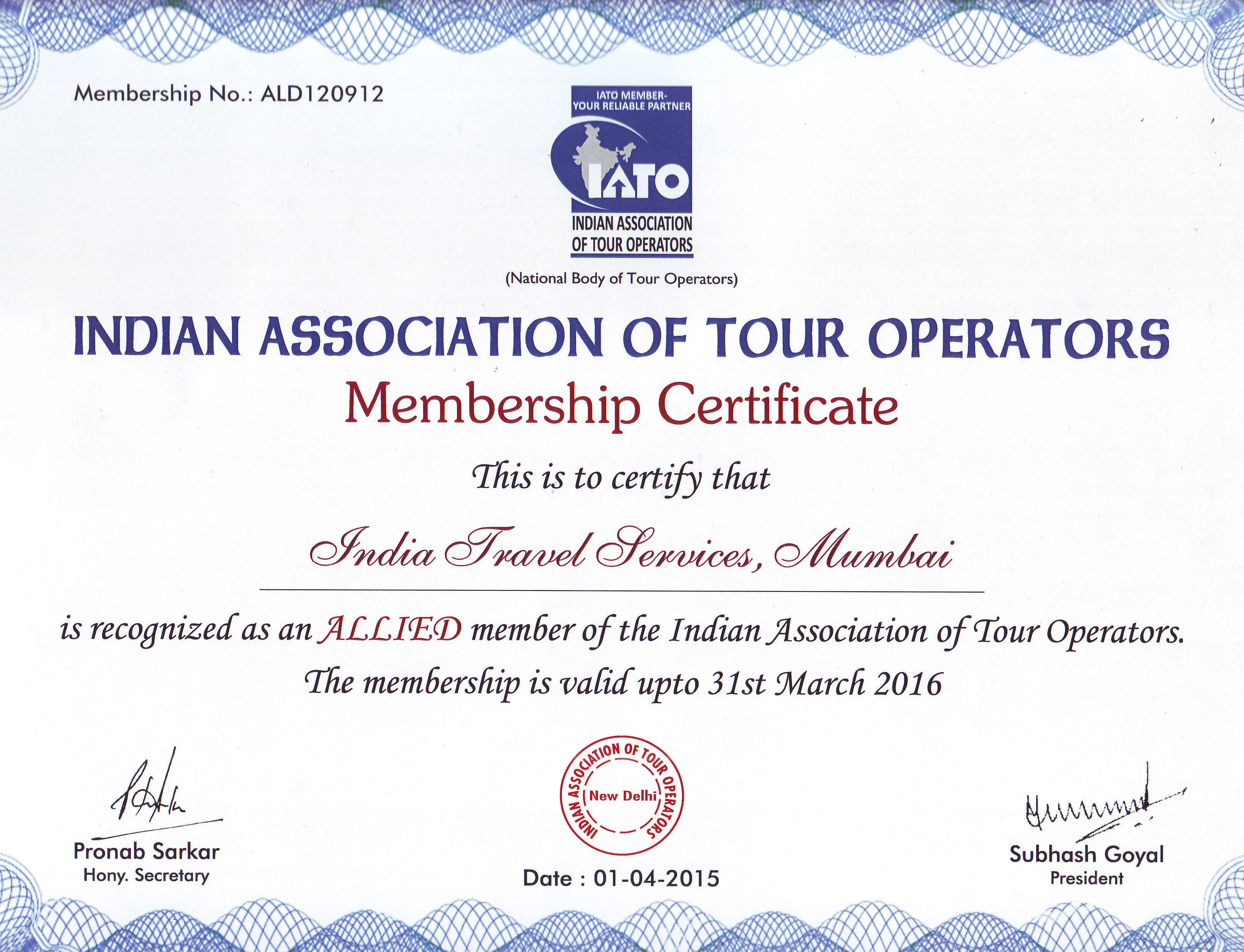Madhya Pradesh & Maharashtra Tour

Delhi - Agra - Bhopal - Bhojpur - Bhimbhetka - Dhar - Mandu - Aurangabad - Nashik - Mumbai (Bombay)
Day 01: Arrive Delhi
Assistance on arrival at Delhi International airport by our tour representative, transfer to hotel. Relax and overnight in Delhi.
Day 02: Delhi - Brindavan – Agra (200 kms - 4 hours)
 After early breakfast at 0800 hrs, drive to Agra enroute visiting Lord Krishna Temples at Vrindavan in Mathura. Afternoon, discover the strong & magnificent Red Fort - built by the three generations of Mughal Emperors between 1565 and 1573, whose military power cannot be questioned. It was the residence of the Mughal Emperors. Each one left there its print, Red sandstone of Akbar and Jahangir, White marble of Shah Jahan. This fort rises on the edges of Yamuna River; surrounded by a wall from 20 to 33 meters top and 2500 m perimeter. Later in the evening visit the Grand & World famous Taj Mahal, whose eternal beauty will astonish and mesmerize the visitors. It is also known as the "Crown of Palaces" built by the Emperor Shah Jahan to immortalize the memory of his beloved wife Mumtaz Mahal who died in 1631. Evening free to visit the inlay handicraft market of Agra, overnight at the hotel.
After early breakfast at 0800 hrs, drive to Agra enroute visiting Lord Krishna Temples at Vrindavan in Mathura. Afternoon, discover the strong & magnificent Red Fort - built by the three generations of Mughal Emperors between 1565 and 1573, whose military power cannot be questioned. It was the residence of the Mughal Emperors. Each one left there its print, Red sandstone of Akbar and Jahangir, White marble of Shah Jahan. This fort rises on the edges of Yamuna River; surrounded by a wall from 20 to 33 meters top and 2500 m perimeter. Later in the evening visit the Grand & World famous Taj Mahal, whose eternal beauty will astonish and mesmerize the visitors. It is also known as the "Crown of Palaces" built by the Emperor Shah Jahan to immortalize the memory of his beloved wife Mumtaz Mahal who died in 1631. Evening free to visit the inlay handicraft market of Agra, overnight at the hotel.
Day 03: Agra – Bhopal (BY Shatabdi Express train at 0800 hrs / arrival in Bhopal at 1410 hrs)
Early morning transfer to railway station to board the train for Bhopal at 0800 hrs, assistance on arrival in Bhopal at 1410 hrs, transfer to hotel in Bhopal, later in the day visit Laxmi Narayan Temple, Moti Masjid, Taj-ul Masjid, Shaukat Mahal, Sadar Manzil and Upper and Lower Lakes. Overnight in Bhopal.
Day 04: Bhopal – Bhojpur – Bhimbhetka – Bhopal (46 kms)
Morning take an excursion tour to Bhojpur & Bhimbhetka. Bhojpur known for the remains of a Shiva temple, sometimes referred to as the "Somnath of the East" and its dams. Later proceed to famous Bhimbetka caves surrounded by the northern fringe of the Vindhyan ranges, are believed to have provided shelter to the primitive man. The caves or the rock shelters belonging to the Neolithic age number more than 600. Inside most of these caves are the paintings that depict, in vivid panoramic detail, the life of the pre-historic cave dwellers. The oldest paintings are believed to be up to 12,000 years old. Drive back to Bhopal in the evening. Overnight at the hotel.
Day 05: Bhopal – Sanchi – Vidisha – Udaigiri – Bhopal
After breakfast take an excursion tour to Sanchi, Vidisha & Udyagiri. Located about 46 km northeast of Bhopal, the town of Sanchi is famous for the Buddhist works of art dating from the 3rd century BC to the 12th century AD. The ancient stupas, monasteries, temples, and pillars form a major source of attraction here. Of these, the most famous is the Sanchi Stupa 1, originally built by the Mauryan Emperor Ashoka. Later drive to Vidisha 10 kms from Sanchi, Vidisha or Besnagar as it was known then, was an important trade centre in Emperor Ashoka's time. On his way to Ujjayani, when he was still a viceroy, he stopped here and married the daughter of a wealthy local businessman. The ruins of a 2nd century BC Brahmin shrine dedicated to Lord Vishnu, show traces of lime mortar – the earliest use of cement in India. Located at the confluence of the Betwa and Beas rivers, Vidisha was renamed Bhilsa by the Muslims, who built the now ruined Bija Mandal, a mosque constructed from the remains of Hindu temples and the Gumbaz-ka-Maqbara. Vidisha later passed on to the Malwa Sultans, the Mughals and then the Scindias. Later proceed to UDAIGIRI CAVES Just 5 kms from Vidashi is Udaigiri Groups of rock cut sanctuaries carved into the sandstone hillside form the Udaigiri Caves, There are 20 caves, out of which 18 are Hindu and the other 2 are Jain. An inscription in one of the caves indicates that they were produced during the reign of Chandragupta II, between 382-401 AD. The caves have been numbered, probably in the sequence in which they were excavated. Cave 5 depicts Lord Vishnu in a beautiful carving in his Varaha (boar) incarnation holding the earth goddess Prithvi on one tusk. Another large sculpture is that of a reclining Lord Vishnu. Cave 20 is particularly interesting, with detailed Jain carvings. On top of the hill are the ruins of a 6th century AD Gupta temple. Later early evening drive back to Bhopal for overnight.
Day 06: Bhopal – Ujjain – Indore (186 kms – 4 hrs)
After breakfast checkout and drive to Indore enroute visiting Ujjain - situated on the banks of the river Shipra, regarded since times immemorial as sacred. The belief in the sacredness of Shipra, has its origins in the ancient Hindu mythological tale of churning of the Ocean by the Gods and the Demons, with Vasuki, the serpent as the rope. The ocean bed first yielded fourteen gems, then Lakshmi, the Goddess of wealth, and finally the coveted vessel of Nectar. Then began the wild scramble for immortality with the demons chasing the Gods across the skies, and in the process, a few drops were spilt, and fell at Hardwar, Nasik, Prayag, and Ujjayini. Hence the sanctity of the waters of the Shipra. Later proceed to Indore, on arrival transfer to hotel. Day free to relax for some time later visit City of Indore famous for its glass bangles and jewellery, Indore has some of the best architectural marvels that belong to the Holkar dynasty. The Rajwada or the Old Palace (a major centre of attraction), Lalbagh palace, (another architectural wonder), Kanch Mandir (a marvellous Jain temple), Chattri Bagh (the memorial with some canopies) and the Bada Ganapati (the largest Ganapati statue in the world) are some of the attractions you must visit in Indore. Moreover, Indore is famous as a shopper/’s paradise. The Khajuri Bazaar offers you unique shopping options of gold and silver work, cloth, leather work and traditional garments. Moreover, there are the Sarafa Market that specialises in snacks and jewellery and the Kasera Bazaar that specialises in metalwork where you can indulge in the variety displayed for selling. The Chanderi and Maheshwari silks of Indore are the other famous attractions of this city. Overnight in Indore.
Day 07: Indore – Omkareshwar – Maheshwar – Indore (90 kms – one way – 2 hours)
After breakfast take an excursion tour to Omkareshwar & Maheshwar. Located a few kilometers away from Indore town is a small island at the confluence of the Narmada and Kaveri rivers in the state. The island is shaped like the holy Hindu symbol ’Om’ and the Omkareshwar temple here is one of the many temples dedicated to Lord Shiva. The temple is made from local soft stone. The temple also holds importance as one of the 12 Jyotirlingams of India, attracting a good number of religious tourists every year. The island also has some other temples near the Omkareshwar temple. Later drive to Maheshwar 80 kms from here. The small town is famous for its fort and temples and also for the saris produced by the local weavers. Known as Maheshwari saris, the silk saris are intricately patterned and quite comfortable to wear. You can get some of the fine locally made saris from the local shops where the prices of these saris are comparatively cheaper. Later drive back to Indore for overnight.
Day 08: Indore – Dhar (60 kms – One & half hour)
After breakfast checkout and drive to Dhar, on arrival transfer to Jhira Bagh Palace which is 4 kms from Dhar. Later in the day visit Dhar the capital of Parmar Kings, among whom Bhoj was the most prominent. During the Muslim rule, Dhar was under the Sultans of Delhi. In the monuments one can see the combination of Hindu, Afghan and Mughal architecture. Bhoj Shala, Laat Masjid, the Fort and the lakes are the main tourist attractions.
Day 09: Dhar - Mandu (35 km s- One Hour) – Dhar
 Morning excursion tour of Mandu which has over 40 monuments to choose from. For convenience, these are divided into three broad groups: the Central Village Group, the Royal Enclave Group, and the Rewa Kund Group. You can easily spend all day in Mandu, wandering in and out of palaces, pausing to admire the beauty of the Champa Baoli, the former baths, and the huge 15th-century Jama Masjid, the finest example of Afghan architecture in India. Then there are the beautiful Jahaz Mahal (ship palace), where the architectural illusion is completed by the two surrounding lakes; the Hindola Mahal, or swing palace; the romantic Baz Bahadur’s Palace and Roopmati’s Pavilion; and Hoshang Shah’s Tomb, the final resting place of the founder of Ghuri Dynasty. Besides, there are many palaces, pavilions, and reservoirs where you can spend a leisurely day taking in the city’s rather turbulent history, which is not revealed by the monuments that speak of luxurious royal lifestyles. Later drive back to Dhar for overnight.
Morning excursion tour of Mandu which has over 40 monuments to choose from. For convenience, these are divided into three broad groups: the Central Village Group, the Royal Enclave Group, and the Rewa Kund Group. You can easily spend all day in Mandu, wandering in and out of palaces, pausing to admire the beauty of the Champa Baoli, the former baths, and the huge 15th-century Jama Masjid, the finest example of Afghan architecture in India. Then there are the beautiful Jahaz Mahal (ship palace), where the architectural illusion is completed by the two surrounding lakes; the Hindola Mahal, or swing palace; the romantic Baz Bahadur’s Palace and Roopmati’s Pavilion; and Hoshang Shah’s Tomb, the final resting place of the founder of Ghuri Dynasty. Besides, there are many palaces, pavilions, and reservoirs where you can spend a leisurely day taking in the city’s rather turbulent history, which is not revealed by the monuments that speak of luxurious royal lifestyles. Later drive back to Dhar for overnight.
Day 10: Dhar - Aurangabad (385 kms – 8 hours)
Checkout early morning and drive to Aurangabad, start early so that you reach Ellora by 1400 hrs, enroute visiting famous Ellora caves. Ellora is one of the highly visited World heritage sites of India. It houses 34 monasteries and temples with some exclusive uninterrupted sequence of monuments that date back from 600 to 1000 AD. The temples of Ellora are dedicated to Brahmanism, Jainism, and Buddhism. It also has some of the excellent stonework depicting the legends related to Lord Shiva. Proceed to Aurangabad – 30 kms, if time permits you can also visit Daulatabad Fort on the way, on arrival transfer to hotel. Relax and overnight at the hotel.
Day 11: Aurangabad - Ajanta Caves
Morning depart for sightseeing tour of famous Ajanta caves. Ajanta is one of the few historical and architectural marvels of India. Recognized as the World Heritage site today, it was discovered during the 19th century by a group of British officers who were on a tiger hunt. The Ajanta group of caves, located deep within the Sahyadri hills above the Waghora, depict the story of Buddhism that prevailed here during 200 BC to 650 AD. After visiting Ajanta Caves drive back to Aurangabad, relax for some time and visit the City of Aurangabad visiting the Tomb of Mughal Emperor Aurangzeb & Pan Chakki, Bibi-ka-Maqbara. Evening free for individual activities, overnight at the hotel.
Day 12: Aurangabad – Nashik (250 kms - 5 hours)
Morning drive to Nashik, enroute one can visit the Holy Shrine of Sai Baba. On arrival transfer to hotel. The interesting town with its 200 temples and picturesque bathing Ghats stands on the Godavari River, one of the holiest rivers of the Deccan. Nasik is one of the four sites for the triennial Kumbh Mela, a huge Hindu gathering which take place here every 12 years. Evening visit Muktidham Temple Complex. Overnight in Nashik.
Day 13: Nashik - Mumbai (Bombay) (180 kms - 3 hours)
Morning drive to Bombay through the Hills of Scenic Igatpuri, on arrival transfer to hotel. Evening visit ISKON temple of Hare Rama & Hare Krishna and one can also choose to stroll at the Juhu Beach. Overnight in Bombay.
Day 14: Bombay
 Morning take a sightseeing tour of Bombay, drive to Gateway of India and from here cruise by motor boats to Elephanta Caves. A flight of 100 steps takes you to the top of the hill where it is set. The caves houses large pillars that seem to hold the ceiling which is made of cross beams. The picturesque presentation of the 9 marvelous sculptured panels, set on the walls are awe-inspiring. The most famous of the panels is the Trimurthi, or triple-headed Shiva, where the God is depicted as the destroyer, the preserver and the creator. Later in the afternoon cruise back to Gateway of India, one can have lunch at the Taj Hotel or other several good Restaurants like Leopold & Mondegar serving continental cuisines. Later visit Prince of Wales Museum, Parliament House, Marine Drive, Jain Temple, Hanging Gardens, Return back to the hotel for overnight.
Morning take a sightseeing tour of Bombay, drive to Gateway of India and from here cruise by motor boats to Elephanta Caves. A flight of 100 steps takes you to the top of the hill where it is set. The caves houses large pillars that seem to hold the ceiling which is made of cross beams. The picturesque presentation of the 9 marvelous sculptured panels, set on the walls are awe-inspiring. The most famous of the panels is the Trimurthi, or triple-headed Shiva, where the God is depicted as the destroyer, the preserver and the creator. Later in the afternoon cruise back to Gateway of India, one can have lunch at the Taj Hotel or other several good Restaurants like Leopold & Mondegar serving continental cuisines. Later visit Prince of Wales Museum, Parliament House, Marine Drive, Jain Temple, Hanging Gardens, Return back to the hotel for overnight.
Day 15: Bombay - Back home
In time transfer to airport to board the flight back home.

Yes, I reached home in a comf ortable way, thank you for your requestion. It was a very nice travelling with your company through Rajasthan and we were glad to do this with you. Thank you very much to manage our tour....
Rupprecht, Thomas
View AllFor more details on Hotels / Packages / Cost and Information contact on
+91 98213 19917 info@tour-india.net



